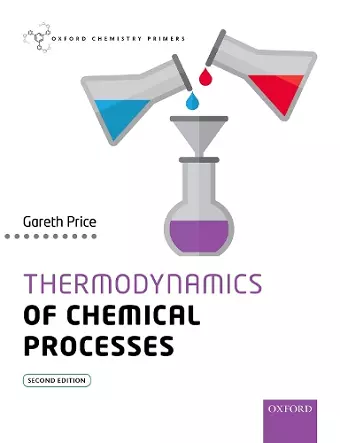Thermodynamics of Chemical Processes
Format:Paperback
Publisher:Oxford University Press
Published:28th Mar '19
Should be back in stock very soon

The renowned Oxford Chemistry Primers series, which provides focused introductions to a range of important topics in chemistry, has been refreshed and updated to suit the needs of today's students, lecturers, and postgraduate researchers. The rigorous, yet accessible, treatment of each subject area is ideal for those wanting a primer in a given topic to prepare them for more advanced study or research. Moreover, cutting-edge examples and applications throughout the texts show the relevance of the chemistry being described to current research and industry. This new edition of Thermodynamics of Chemical Processes is the only self-contained text to cover the thermodynamics of chemical processes at a level appropriate for undergraduates. Describing the basic principles which govern reactivity and phase equilibria in chemical systems, the text is written at the first year undergraduate level and contains a number of worked examples and problems to help students through this introductory material. It shows the application of the theory to disciplines such as biochemistry, materials science, environmental science, forensic and analytical sciences. This new edition places an emphasis on applying the principles and solving problems rather than on formal proof of theorems and detailed mathematical understanding. The ideas of enthalpy, internal energy and entropy are covered to lead into Gibbs free energy and how it can be used to correlate and predict the equilibrium position and properties of chemical reactions and multi-phase systems. Background mathematical ideas are introduced as needed, and the text includes material describing how the physicochemical principles can be applied to related areas such as materials science or biochemistry.
The chapters are very readable and immediately accessible - the starting standard is very gentle. There are a lot of every day examples which allow the material to be linked to familiar phenomena. I felt all of the material I would expect to be there was included, with not too much superfluous. The maths was sufficient to understand the material, define the important parameters and introduce the necessary equations but was explained well enough and at a simple enough level to allow those without A level maths and just starting University level maths to access the material. * Dr Michael Seery, University of Edinburgh *
One of the strengths of this book is the introduction of concepts based on specific examples. This makes it easier for the students to relate to these concepts. [Chapter 5] serves our course of second year Thermodynamics perfectly. It provides a slightly larger depth of detail than we teach, allowing the better students to read a little bit beyond the taught material without making it too demanding for the weaker students. * Dr N Hendrik Nahler, Heriot-Watt University *
ISBN: 9780198814450
Dimensions: 248mm x 189mm x 7mm
Weight: 234g
128 pages
2nd Revised edition